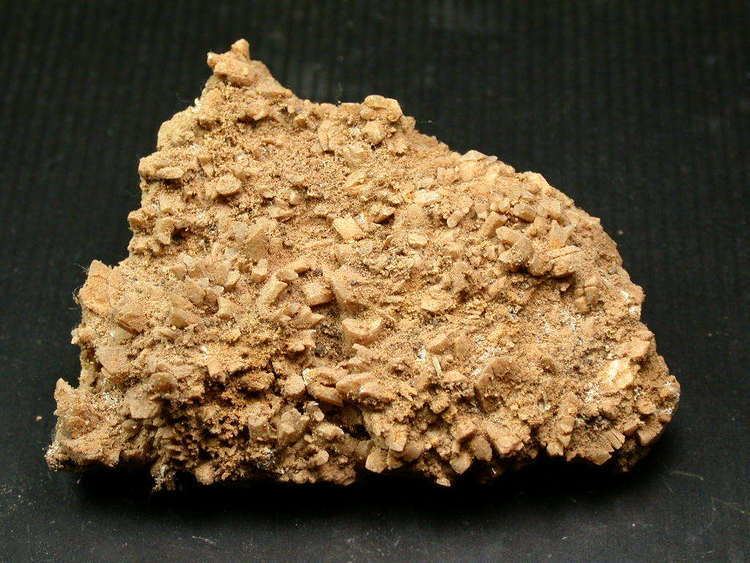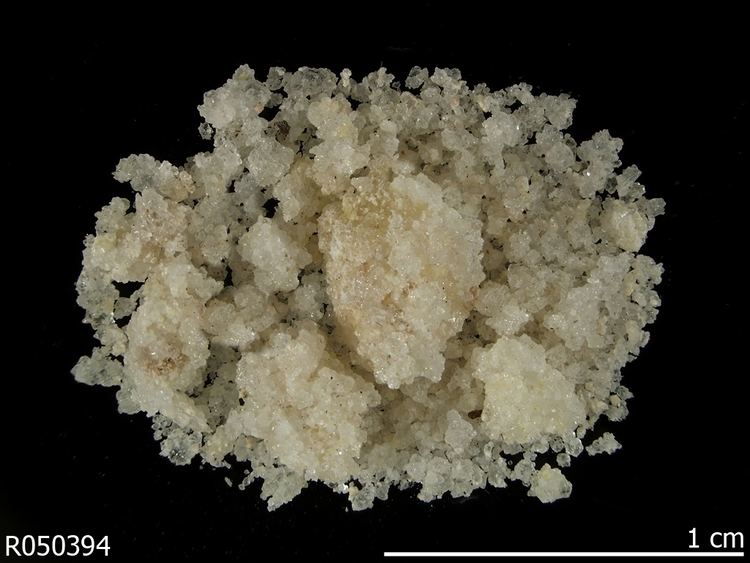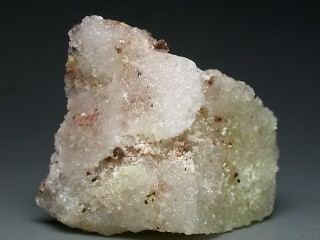Space group R3/c | Formula(repeating unit) NaNO3 Crystal system Hexagonal crystal family | |
 | ||
Strunz classification 5.NA.05 (10th edition)5/A.01-10 (8th edition) Crystal class Hexagonal scalenohedral (3m)H-M symbol: (3 2/m) Unit cell a = 5.06 Å, c = 16.82 Å; Z = 6 | ||
Nitratine or nitratite, also known as cubic niter (UK: nitre), soda niter or Chile saltpeter (UK: Chile saltpetre), is a mineral, the naturally occurring form of sodium nitrate, NaNO3. Chemically it is the sodium analogue of saltpeter. Nitratine crystallizes in the trigonal system, but rarely occurs as well formed crystals. It is isostructural with calcite. It is quite soft and light with a Mohs hardness of 1.5 to 2 and a specific gravity of 2.24 to 2.29. Its refractive indices are nω=1.587 and nε=1.336.

The typical form is as coatings of white, grey to yellowish brown masses. The rare crystals when found typically have the scalenohedral form of the calcite structure. It is found only as an efflorescence in very dry environments. It is very soluble in water such that it is deliquescent and will absorb water out of the air and turn into a puddle of sodium nitrate solution when exposed to humid air.
Nitratine was once an important source of nitrates for fertilizer and other chemical uses including fireworks. It has been known since 1845 from occurrences in the Confidence Hills, Southern Death Valley, California and the Atacama Desert, Chile. It is still used in organic farming (where Haber-Bosch ammonia is forbidden) in the US, but prohibited in international organic agriculture.

